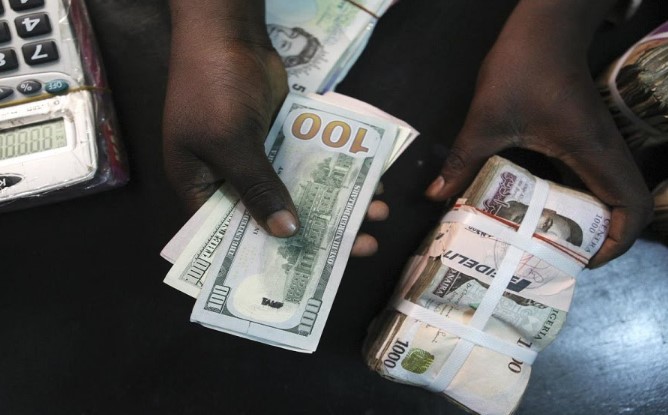One of its best performances in months, Nigeria’s local currency had an astounding recovery in September 2025.
Analysts and Bureau De Change (BDC) operators link this revival to the Central Bank of Nigeria’s (CBN) tighter monetary policy, increased investor confidence, and the rising financial technology in guaranteeing openness and reducing demand for speculative funds.
The naira made significant progress over the month, moving from around N1,500/$1 to about N1,400/$1. Many traders have called this a “Naira boom,” noting the change from panic-driven speculation to restored market stability.
The president of the Association of Bureau De Change Operators of Nigeria (ABCON), Alhaji Aminu Gwadabe, noted that the strong results reflected the effectiveness of fresh policy measures, increasing oil output, and disciplined dollar management.
He said that as demand for dollars dropped dramatically from both speculators and regular buyers, the once-dominant parallel market had cooled. Digital transactions have become simpler thanks to fintech inventions, hence lowering the reliance on domiciliary accounts and cash-based foreign currency activities.
The News Chronicle learned that the CBN’s integration of digital financial systems and the introduction of the Non-Resident Bank Verification Number (NRBVN) explain much of this advancement.
This integrated framework improves compliance and transparency across financial institutions by linking individual BVNs with company registration numbers. Gwadabe claims that these steps have bolstered Nigeria’s case to leave the Financial Action Task Force (FATF) grey list; the official review is due in October 2025.
He said that Nigeria’s crude oil production now hovers at around 1.8 million barrels per day, therefore increasing foreign exchange inflows and government income. Higher interest rates and more restrictive rules have also boosted investor confidence and helped to relieve inflationary pressures, he noted.
Another BDC operator, Abubakar Ardo, stressed that the CBN’s consistent dollar injections into banks and BDCs decreased panic buying, while greater diasporan remittances during the back-to-school season further supported supply.
Likewise, Dr. Eugene Eke, an economist at the University of Abuja, said better collaboration between the Ministry of Finance and the CBN improved fiscal discipline, reassuring both market participants and investors.
Analysts currently forecast that the naira could keep its stability beyond 2025 if these steps stay constant throughout the fourth quarter. Gwadabe remarked, “October will be the genuine test,” emphasizing that policy coherence and creativity have to keep up the momentum.
With a closing figure of N1,478/$1 by the end of September, the naira traded stronger than it had started at N1,527.9/$1. Highlighting the general faith in Nigeria’s financial system, external reserves also increased over $42 billion, which is the highest amount in six years.
The September rally has turned the naira around and shown how Nigeria can navigate with proper policy coordination, fintech integration, and fiscal transparency. It’s money for long-term stability and economic turnaround.



